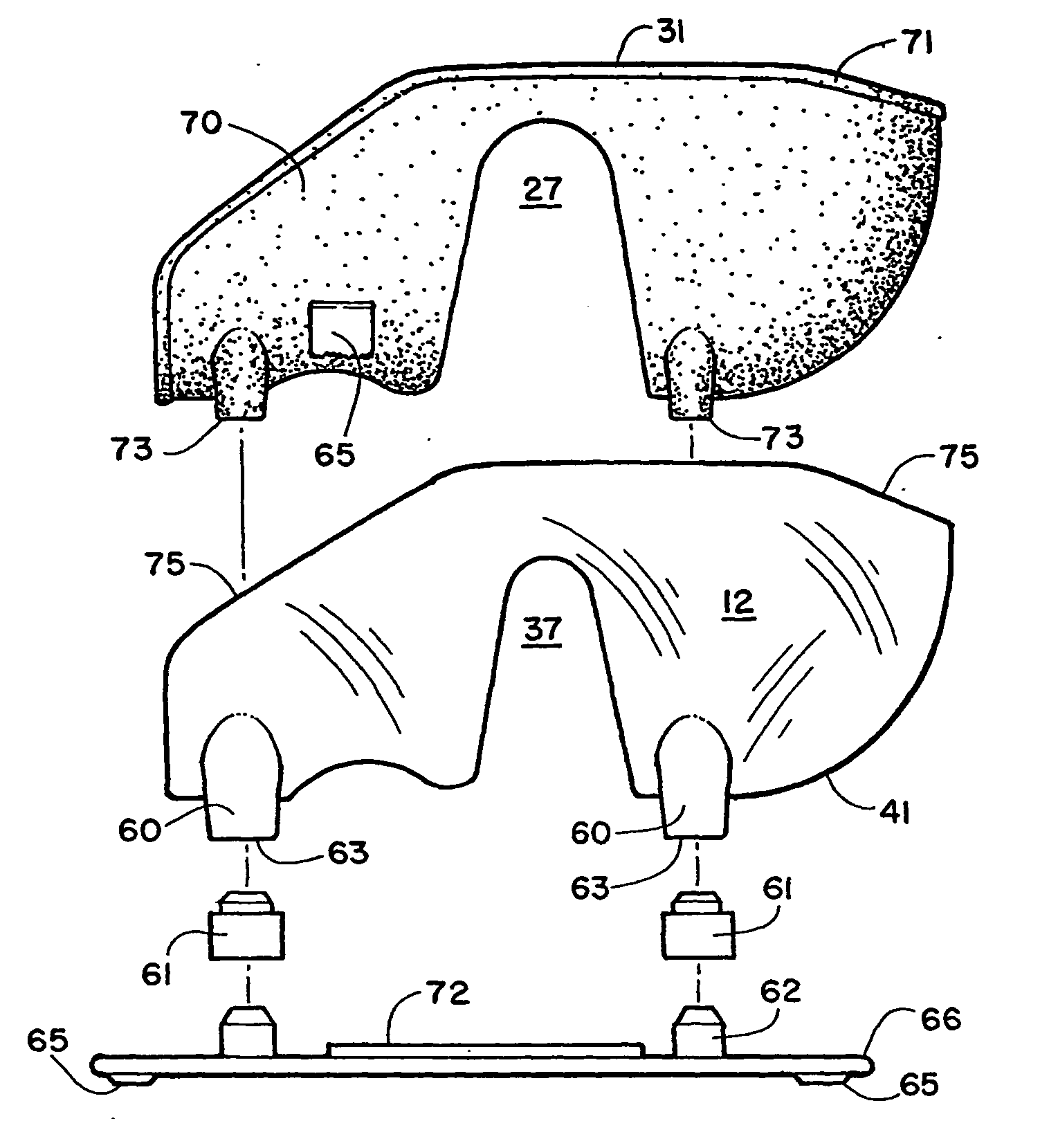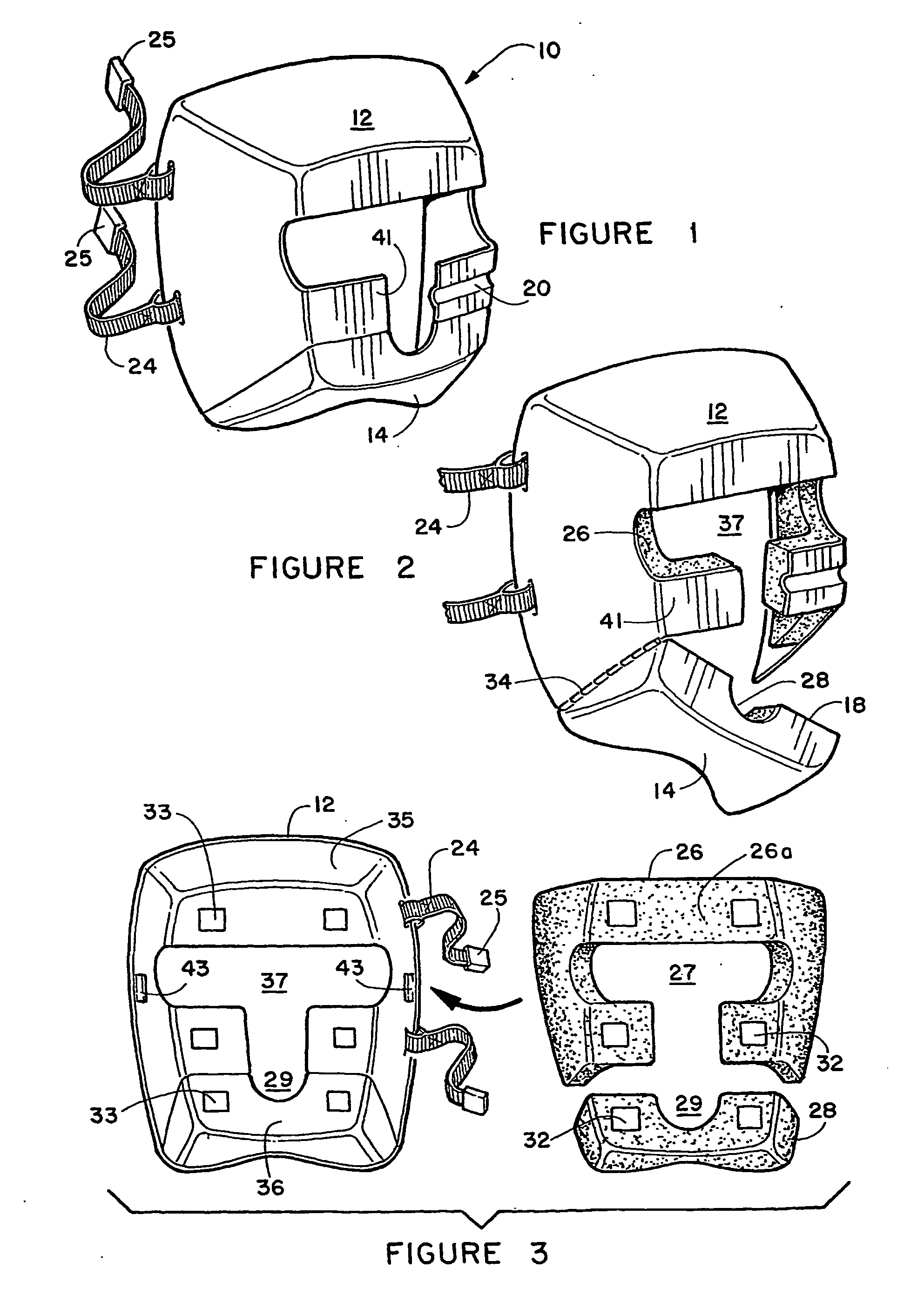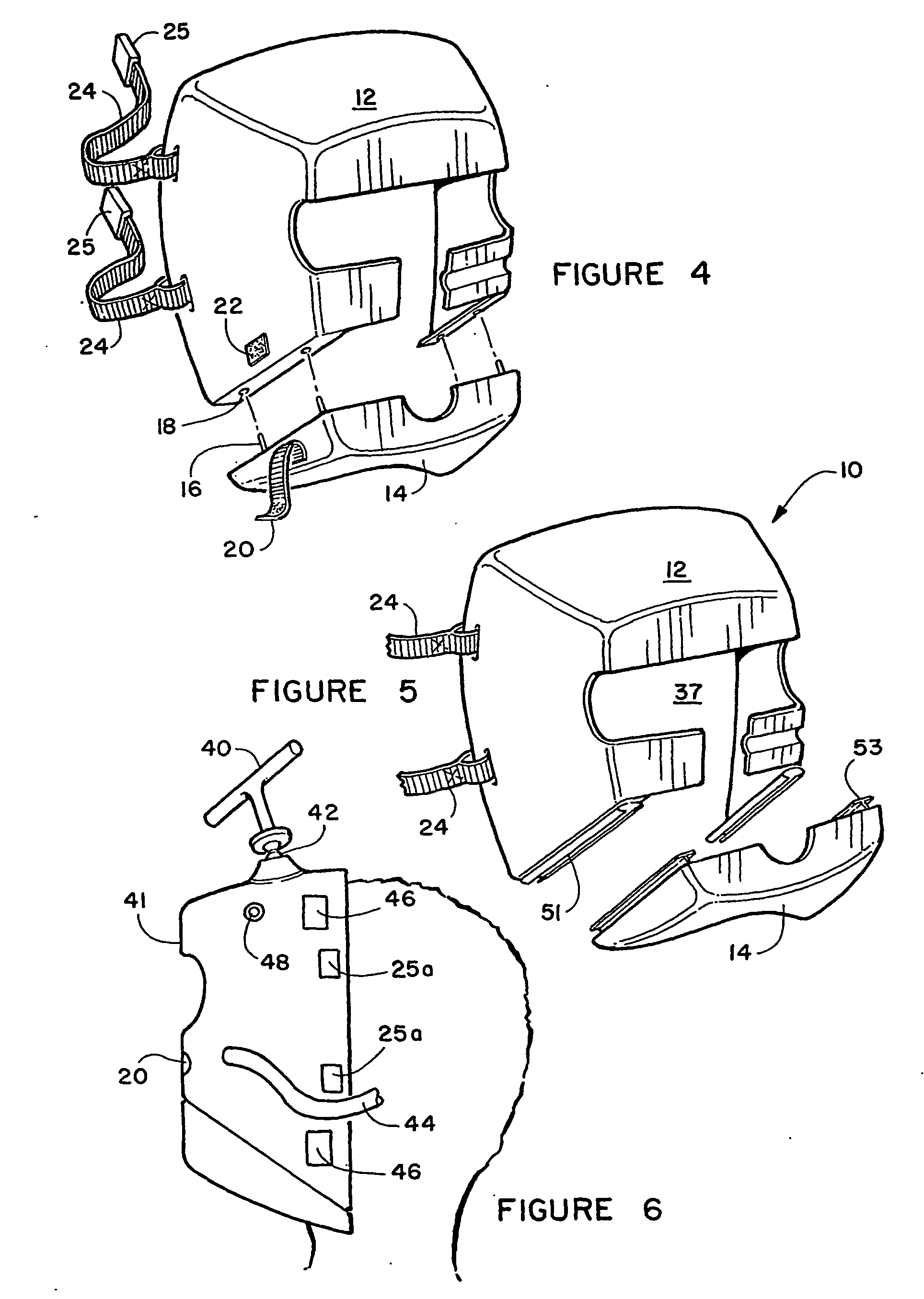Headrest for a patient-bearing surface
a headrest and patient technology, applied in the field of safety helmets, can solve the problems of eye damage, patient care challenges, and patients under general anesthesia are especially vulnerable, and achieve the effect of convenient viewing
- Summary
- Abstract
- Description
- Claims
- Application Information
AI Technical Summary
Benefits of technology
Problems solved by technology
Method used
Image
Examples
Embodiment Construction
[0053] Referring now to the drawings, FIG. 1 depicts a preferred embodiment of the modularly assembled protective surgical helmet apparatus 10 featuring the helmet casing 12 which is best made from a substantially rigid but easily molded material such as plastic. The plastic casing should also be resistant to the heat or chemicals sufficient to allow for sterilization between uses. The modular version of the helmet casing 12 mates with a chin support 14 using conventional registering mating positioners such as registration pins 16 which correspond to apertures 18 upon the helmet casing 12. Of course the registration pins 16 and apertures 18 might be reversed in positioning or other conventional means of registration and dismountable attachment may be used to achieve a properly aligned mounting of the chin support 14 to the helmet casing 12. Alternatively, the chin support 14 can be slidably mounted to the helmet casing 12 using a cooperating pair of slide mounts 53 and 51 depicted i...
PUM
 Login to View More
Login to View More Abstract
Description
Claims
Application Information
 Login to View More
Login to View More - R&D
- Intellectual Property
- Life Sciences
- Materials
- Tech Scout
- Unparalleled Data Quality
- Higher Quality Content
- 60% Fewer Hallucinations
Browse by: Latest US Patents, China's latest patents, Technical Efficacy Thesaurus, Application Domain, Technology Topic, Popular Technical Reports.
© 2025 PatSnap. All rights reserved.Legal|Privacy policy|Modern Slavery Act Transparency Statement|Sitemap|About US| Contact US: help@patsnap.com



